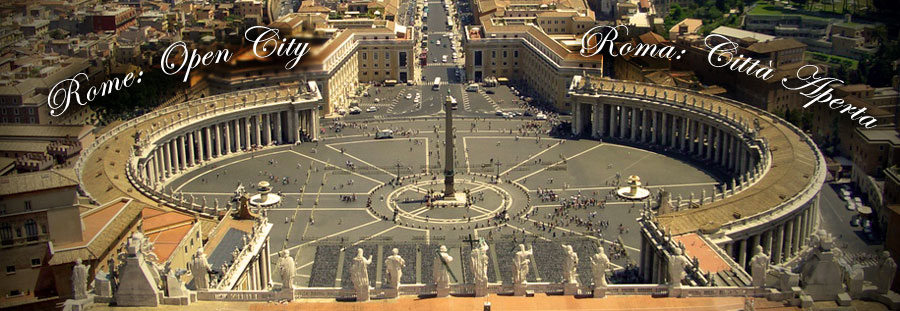
FINE ARTS CULTURAL STUDIES
FACULTY OF FINE ARTS ▪ YORK UNIVERSITY
FACS 2800B/FACS 3800B (6.0): STUDIES ABROAD:
THE ARTS IN CULTURE I/II
ROME OPEN CITY ▪ ROMA: CITTÀ APERTA
Course Description
These study abroad courses seek to introduce you to the city of Rome--its urban history, structure, and multi-faceted culture—through the fine, performing, and popular arts and architecture. To become familiar with the city and to understand how the arts and architecture have both shaped and reflected its profile, we will initially approach Rome through its rioni (neighbourhoods), starting with our colourful home rione (neighbourhood) of Trastevere. By taking on one rione at a time, we will able to map out manageably a large city made up of diverse characters and, from time to time, of competing interests. We will further enrich our study of the city by situating the rioni, their arts, architecture, and cultural activity in relation to what has come to be called the three Romes: Pagan, Christian, and Fascist. This will also allow us to connect individual rioni across the larger network of the city and to open up the topographical boundaries between them. Finally, we will track the ways in which contemporary Rome responds to its history through current arts and architectural projects and municipal cultural initiatives.
For a glimpse into the history and character of the rioni of Rome, please visit:
http://nolli.uoregon.edu/rioni.html and/or http://en.wikipedia.org/wiki/Rioni_of_Rome.
Course Title
The courses take their name from the award-winning 1945 neorealist film, Roma, città aperta (Rome, Open City) directed by Roman-born Roberto Rossellini. In that film, depicting the city during the Nazi occupation during World War II, the term “open city” refers to a military strategy that allowed the enemy to enter Rome freely so that its urban structure, monuments, and citizens were not destroyed through battle. (You can watch or borrow this film from the Sound and Moving Image Library, located within Scott Library, at York University.)
For the purposes of these courses, however, the term “open city” has been adapted to suggest a place that has traditionally presented itself with arms wide open, extending an invitation to those from beyond its borders interested in the arts, architecture, and urban culture. The concept of “open arms” is manifested architecturally and thus spatially by the arcades designed by the seventeenth-century Roman artist-architect-playwright, Gianlorenzo Bernni for the piazza (square) in front of the church of Saint Peter’s, illustrated on the banner at the top of this page.
Schedule and Teaching Locations
There will be a short series of preparatory meetings at York before departure. Once in Rome, classes will be held Monday through Friday for four weeks, from 1 -27 June, typically from 8:30-12:30 with some variation in scheduling to accommodate Roman open hours and/or special events. Most classes will be held in situ meaning that we’ll be out on city streets rather than in the classroom. Occasional meetings and presentations will be held at Bibli, a book store and cultural centre in Trastevere.
There will also be a mandatory day-long field trip from Rome each of the first three weeks: to the ancient Roman ruins of Pompeii, the sixteenth-century literary Parco delle Mostre/Monster Park in Bomarzo, “rediscovered” by Salvador Dali and Mario Praz in the mid twentieth century, and the garden of the Villa d’Este in Tivoli with its spectacular late Renaissance-Baroque hydraulic fountains. Optional weekend trips to Florence and the Abruzzo countryside will also be arranged for students interested in these experiences.
Banner Image
ianlorenzo Bernini, Piazza di San Pietro (St. Peter's Square), Rome, 1656-1667. View from the dome of the Basilica di San Pietro (Basilica of St. Peter's). |
|
